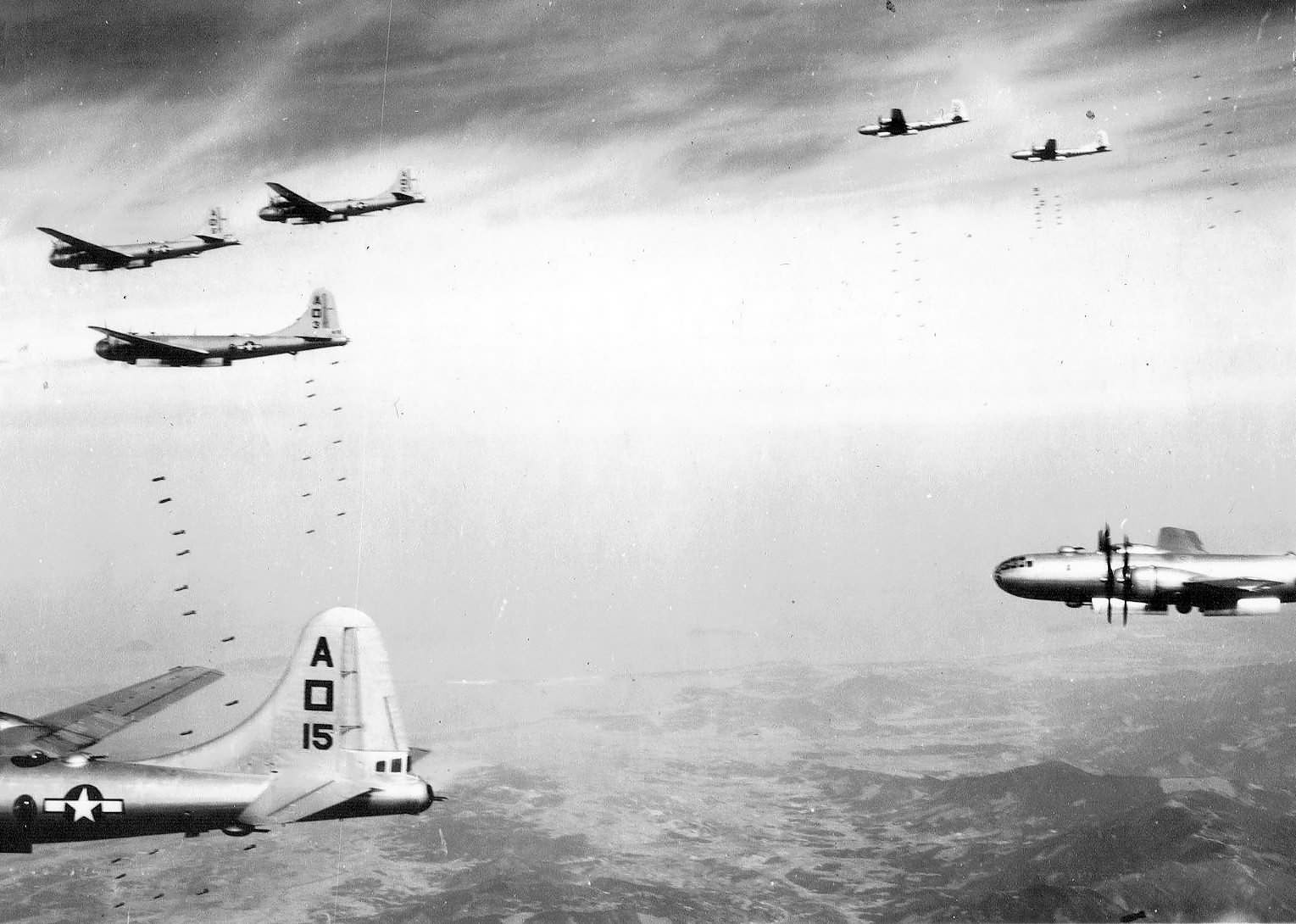Targets of the B-29 Bombing Campaign
The B-29 bombing campaign against Japan, which began in June 1944 and lasted until the end of the war, targeted a variety of objectives.
Initially, the focus was on strategic targets, aimed at crippling Japan’s war-making capacity. The most frequently raided location in Tokyo was the Nakajima’s Musashi aircraft engine factory at Musashino, which was subject to over a dozen air raids by B-29s and US Navy warplanes. The first attack on Tokyo since the Doolittle Raid in 1942 took place on November 24, 1944 when the XXI Bomber Command attacked the Nakajima’s Musashino Aircraft Engine Factory, located 10 miles west of Tokyo. This attack targeted the warehouse and machine shop area on the east side of the complex. The Musashi factory was also the target of the last B-29 raid on Tokyo on August 8, 1945.
Other specific industrial targets included:
- Iron and steel production: The campaign’s initial emphasis, accessible from Chinese airfields.
- Aircraft factories: The emphasis shifted to aircraft production after the Marianas were captured. These factories were clustered on Honshu’s Pacific coast, easily reached from the Marianas. One example is the Nakajima aircraft factory at Ota, which produced Ki-84s, one of the Imperial Army’s best fighters.
- Oil refineries: Although a lower priority than aircraft production because of the US Navy’s success in blocking oil shipments, refineries were still targeted.
The US aimed to destroy these targets using precision bombing, initially requiring daylight raids. However, challenges with high-altitude precision bombing led to a shift in tactics.
Starting in March 1945, the focus of the B-29 campaign shifted to area bombing, with the goal of destroying Japanese cities and industrial centers through low-level nighttime incendiary raids. Much of Japan’s industrial base rested on small manufacturing plants co-located in the residences of the owners and employees. This made area bombing, though initially dismissed because it clashed with the Army Air Force’s vision of precision attacks, particularly effective. The first major fire raid on Tokyo on March 9-10, 1945 destroyed over 267,000 buildings and killed over 83,000 people. These raids proved highly effective in destroying Japan’s industrial base and breaking its will to fight, ultimately contributing to Japan’s surrender.
In addition to strategic bombing, B-29s were also used for tactical operations in support of the Allied island-hopping campaign. This included:
- Mining Japanese harbors and shipping lanes: This operation, code-named “Operation Starvation,” aimed to cripple Japan’s maritime transport and disrupt its supply lines.
- Attacking Japanese airfields: B-29s conducted low-level bombing on airfields in Japan and Japanese-held territories to reduce the threat to Allied forces.
The B-29 bombing campaign represented a significant turning point in the Pacific War. The scale and intensity of the attacks, combined with the innovative tactics and technologies employed, proved instrumental in achieving Allied victory.
